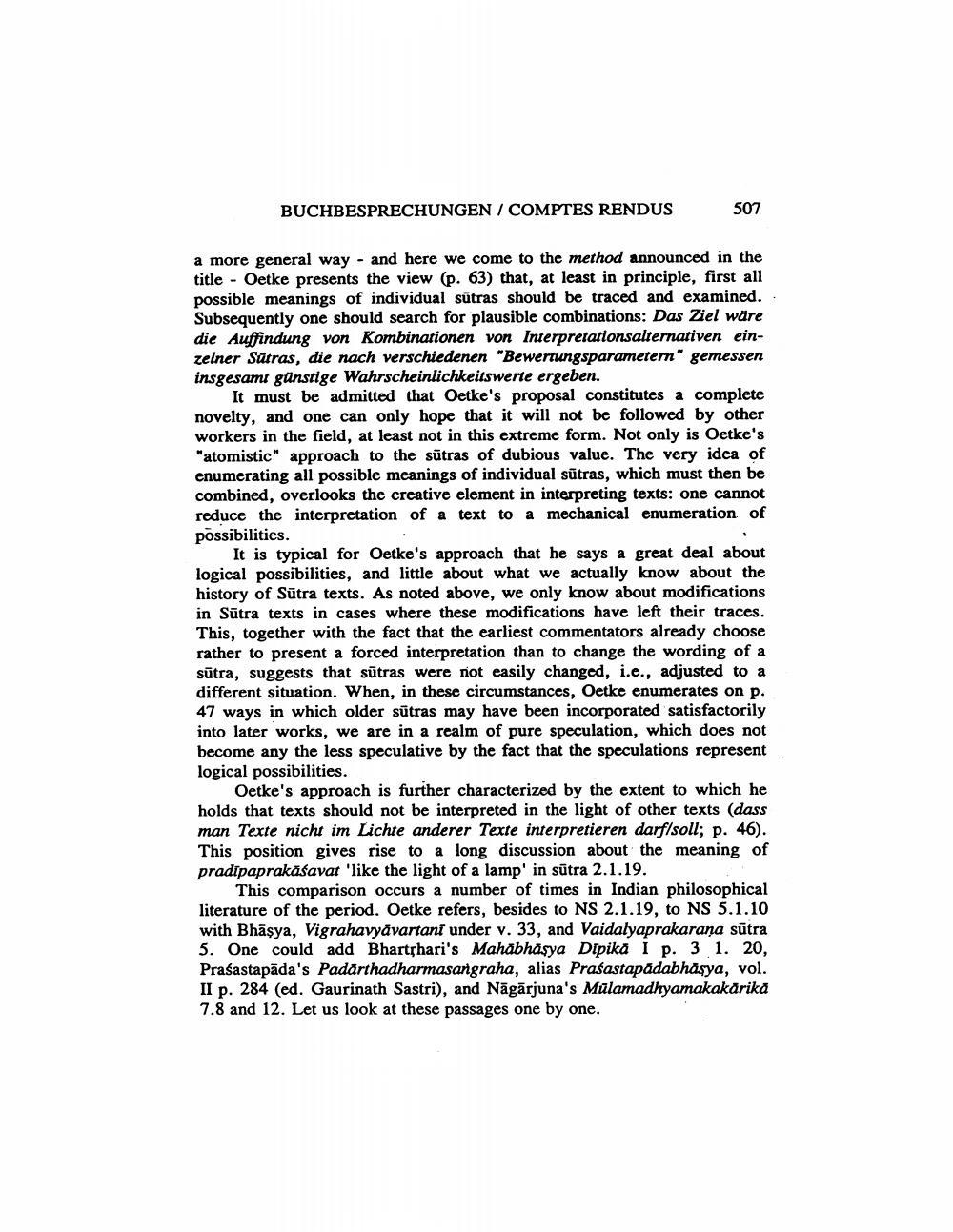Book Title: Buchbesprechungen Comptes Rendus Author(s): Johannes Bronkhorst Publisher: Johannes Bronkhorst View full book textPage 7
________________ 507 BUCHBESPRECHUNGEN / COMPTES RENDUS a more general way - and here we come to the method announced in the title Oetke presents the view (p. 63) that, at least in principle, first all possible meanings of individual sutras should be traced and examined. Subsequently one should search for plausible combinations: Das Ziel wäre die Auffindung von Kombinationen von Interpretationsalternativen einzelner Sutras, die nach verschiedenen "Bewertungsparametern" gemessen insgesamt günstige Wahrscheinlichkeitswerte ergeben. It must be admitted that Oetke's proposal constitutes a complete novelty, and one can only hope that it will not be followed by other workers in the field, at least not in this extreme form. Not only is Oetke's "atomistic" approach to the sutras of dubious value. The very idea of enumerating all possible meanings of individual sutras, which must then be combined, overlooks the creative element in interpreting texts: one cannot reduce the interpretation of a text to a mechanical enumeration of possibilities. It is typical for Oetke's approach that he says a great deal about logical possibilities, and little about what we actually know about the history of Sūtra texts. As noted above, we only know about modifications in Sutra texts in cases where these modifications have left their traces. This, together with the fact that the earliest commentators already choose rather to present a forced interpretation than to change the wording of a sutra, suggests that sutras were not easily changed, i.e., adjusted to a different situation. When, in these circumstances, Oetke enumerates on p. 47 ways in which older sütras may have been incorporated satisfactorily into later works, we are in a realm of pure speculation, which does not become any the less speculative by the fact that the speculations represent logical possibilities. Oetke's approach is further characterized by the extent to which he holds that texts should not be interpreted in the light of other texts (dass man Texte nicht im Lichte anderer Texte interpretieren darf/soll; p. 46). This position gives rise to a long discussion about the meaning of pradipaprakasavat 'like the light of a lamp' in sūtra 2.1.19. This comparison occurs a number of times in Indian philosophical literature of the period. Oetke refers, besides to NS 2.1.19, to NS 5.1.10 with Bhasya, Vigrahavyavartant under v. 33, and Vaidalyaprakarana sūtra 5. One could add Bhartṛhari's Mahabhasya Dipika I p. 3 1. 20, Prasastapada's Padarthadharmasangraha, alias Prasastapādabhāṣya, vol. II p. 284 (ed. Gaurinath Sastri), and Nāgārjuna's Mūlamadhyamakakārikā 7.8 and 12. Let us look at these passages one by one.Page Navigation
1 ... 5 6 7 8 9 10
